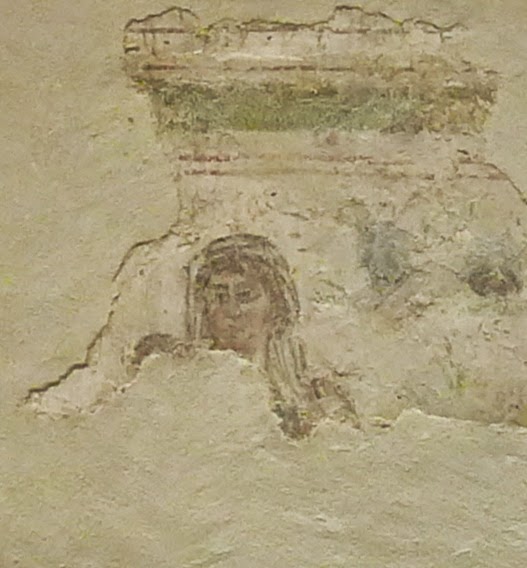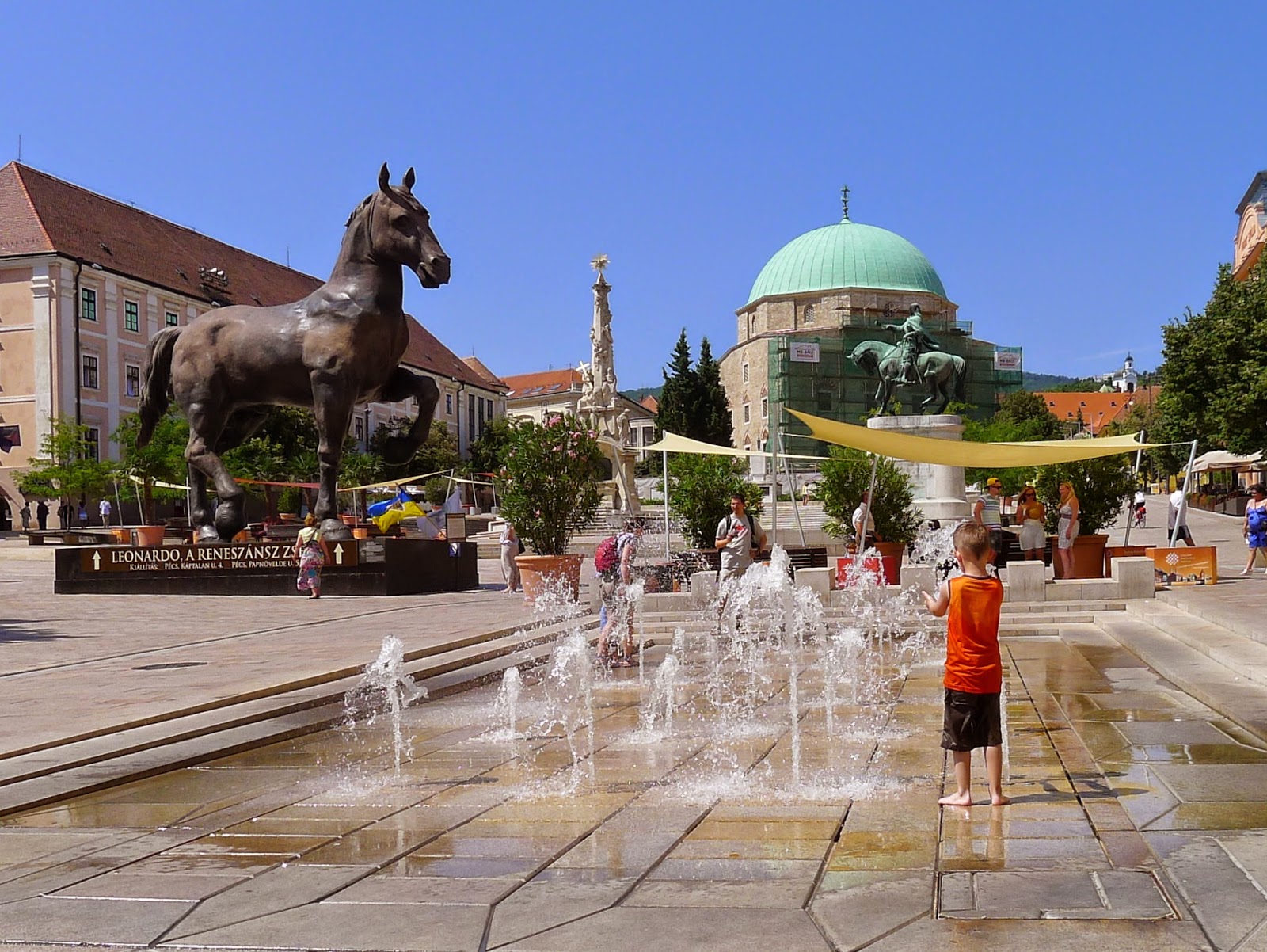 |
| UNESCO Early Christian Burial Site of Sopianae, Pecs, Hungary |
A few hours south by train from Budapest is Pecs, a cultural center of Hungary, a lovely medieval and modern university town with multi-cultural roots. It is also home to the UNESCO World
Heritage Site, the Early Christian Necropolis of Pecs. This archaeological site is part of the ancient city of Sopianae, founded by the
Romans almost two thousand years ago and once home to 10,000 people. The city of Pecs, with a population of 150,000, now completely overlays the ancient town of Sopianae.
 |
| Early Symbol of Christianity at Pecs |
The Romans introduced Christianity to this part of Hungary and by 400 AD, the trading center of Sopianae had a significant Christian population. Three ancient Christian burial grounds are just outside the old walled town of Sopianae. Here are tombs, numerous family burial chapels, monuments and mausoleums. This type of Christian burial
site, with many grouped stone ceremonial buildings and chambers, was
unique for this era in Europe. The well-preserved 1600 year old site is, therefore, historically important.
From the town center in Pecs we easily walked to the UNESCO World Heritage site, the Cella Septichora, Early Christian Cemetery. The burial chambers excavated here, around the Szent Istvan Square, date back to the 4th century.
 |
| Cella Septichora, Early Christian Cemetery, UNESCO World Heritage site at Pecs, Hungary |
 |
| Early image of Mary? |
The UNESCO Center entrance is a low, concrete structure, nestled into the surrounding public plaza and steps. It's easy to miss. Once inside, descend below ground to the courtyard chamber, well-lit due to a glass roof that serves as the floor of the public square above. Through tunnels we ventured into deeper burial chambers with remnants of biblical frescoes and Christian and Roman imagery.
In the two story barrel-vaulted Saint Peter and Paul Chamber, the Apostles point to an early Christian symbol of Jesus, a circular Christogram with Greek letters. The garden of Eden and other biblical stories are depicted as well as a faded portrayal of a woman, possibly the Virgin Mary. It was fascinating to see these Christian images which were created only a few hundred years after the death of Christ.
We later toured the nearby Mausoleum, with a large sarcophagus and 4th century images of Daniel and lions, and Eden.
 |
| UNESCO World Heritage Site Cella Septichora, Early Christian Necropolis, Pecs, Hungary |
 |
| Fresco in Saint Peter and Paul Chamber, UNESCO |
This World Heritage site is well protected and beautifully
displayed. It is one of the
largest and best preserved early Christian burial grounds in Europe. We found it interesting, well-presented, reasonably priced and like most UNESCO World Heritage sites, invaluable for its preservation of human history and culture. In Pecs, be sure to seek it out. The Center is also used for current cultural events by the citizens of Pecs. The UNESCO site was closed on Mondays.
 |
| Apostles point to early Christian symbol of Jesus, UNESCO World Heritage, Pecs, Hungary |
 |
| Pecs, Hungary - medieval roads |
 |
| Pecs, Hungary, with temporary Leonardo da Vinci exhibit -the Horse. |
 |
| Center Square of Pecs, Hungary |
